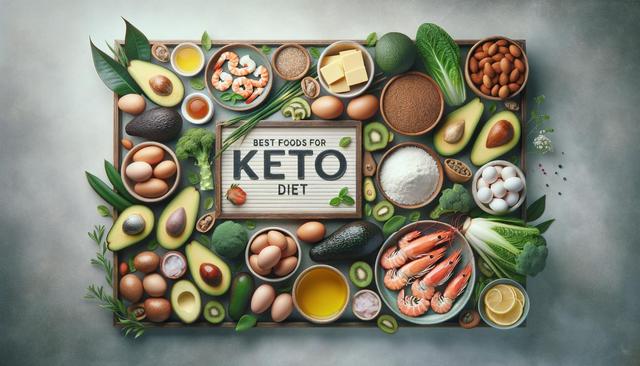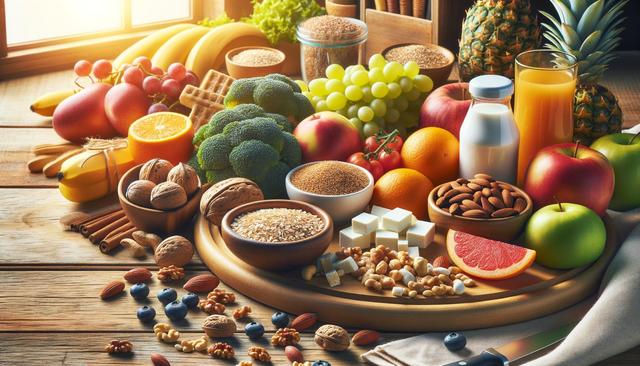Understanding the Basics of Keto-Friendly Foods
The ketogenic diet focuses on minimizing carbohydrate intake while increasing healthy fats and maintaining moderate protein levels. This shift in macronutrient ratio encourages the body to enter a state of ketosis, where fat is used as the primary energy source instead of glucose. To maintain this metabolic state, it’s crucial to choose foods that are low in carbs and high in nutritional value. A typical ketogenic meal plan includes a variety of whole foods that are rich in healthy fats, fiber, and essential vitamins. Avoiding processed carbohydrates and sugars is key to staying on track.
In general, keto-friendly foods include:
- Fatty cuts of meat and poultry
- Low-carb vegetables like spinach and cauliflower
- Full-fat dairy products
- Nuts, seeds, and healthy oils
- Fish and seafood high in omega-3 fatty acids
These food groups provide the necessary nutrients while supporting the body’s shift into ketosis. Understanding which foods fall into these categories is the first step toward building a successful ketogenic meal plan.
Healthy Fats: The Foundation of Keto
Fat is the cornerstone of the ketogenic diet, and consuming the right types of fats is essential for energy and overall health. While fats have traditionally been viewed with caution, the keto diet emphasizes their importance in supporting metabolic function and satiety. There are several types of healthy fats that are commonly consumed on a keto diet, and each offers unique benefits.
Common sources of healthy fats include:
- Avocados and avocado oil
- Olives and extra virgin olive oil
- Coconut oil and MCT oil
- Butter and ghee made from grass-fed sources
- Fatty fish like salmon, sardines, and mackerel
These fats not only provide sustained energy but also contribute to heart health and cognitive function. It’s important to avoid trans fats and highly processed vegetable oils, as they may counteract the health benefits of a ketogenic eating pattern. Instead, focus on incorporating natural sources of fat that align with whole-food nutrition.
Proteins That Fit the Keto Profile
Protein plays a supportive role in the keto diet by helping maintain muscle mass and promoting fullness. However, it’s important not to overconsume protein, as excess amounts can be converted into glucose through a process called gluconeogenesis. For that reason, keto-friendly proteins should be part of a balanced approach that complements fat intake without disrupting ketosis.
Recommended protein sources for a keto lifestyle include:
- Beef, pork, lamb, and other red meats
- Poultry such as chicken and turkey (especially with skin)
- Eggs, preferably pasture-raised
- Seafood, including shellfish and oily fish
- Cheese and other full-fat dairy products
These protein options not only align with the macronutrient goals of a keto diet but also provide important nutrients like iron, zinc, and B vitamins. When choosing meats and dairy, opting for grass-fed or organic sources can enhance the nutrient profile and overall quality of the food.
Low-Carb Vegetables and Fiber Sources
While the keto diet restricts carbohydrates, it doesn’t eliminate vegetables altogether. In fact, non-starchy, low-carb vegetables are encouraged due to their high fiber content and micronutrient density. These foods help support digestion, provide antioxidants, and add bulk to meals, making them an essential part of any ketogenic meal plan.
Common low-carb vegetables include:
- Leafy greens like spinach, kale, and arugula
- Cruciferous vegetables such as broccoli, cauliflower, and cabbage
- Zucchini, eggplant, and bell peppers
- Mushrooms, cucumbers, and celery
Incorporating these vegetables into daily meals can improve digestive health and help maintain a healthy gut microbiome. Many of these options can be roasted, sautéed, or eaten raw, offering flexibility in meal preparation. Fiber from vegetables also helps mitigate potential digestive issues that can arise when transitioning to a low-carb lifestyle.
Snacks and Pantry Staples for Keto Success
Having keto-friendly snacks and pantry items on hand makes it easier to maintain dietary consistency, especially during busy days. Choosing snacks that align with ketogenic principles can help curb cravings while supporting energy levels between meals. These items are not only convenient but also help prevent the temptation of high-carb alternatives.
Popular keto-approved snacks and staples include:
- Mixed nuts and nut butters (unsweetened)
- Cheese sticks or slices
- Hard-boiled eggs
- Olives and pickles
- Beef jerky with no added sugar
In addition, keeping a well-stocked pantry with keto essentials like almond flour, coconut flour, sugar-free sweeteners, and canned fish can simplify meal prep. These ingredients allow the creation of keto-friendly versions of traditional dishes, from baked goods to savory entrees. Planning ahead by preparing snacks and meals in advance can greatly improve adherence to the diet and reduce the likelihood of unintentional carb intake.
Conclusion: Building a Sustainable Keto Diet
Adopting a ketogenic diet involves more than eliminating carbs—it requires a thoughtful selection of nourishing, low-carb foods that support long-term health and energy. By focusing on healthy fats, high-quality proteins, fiber-rich vegetables, and smart snack choices, individuals can create a meal plan that is both satisfying and nutritionally balanced. Whether you’re new to keto or looking to refine your current eating habits, prioritizing whole, nutrient-dense foods makes it easier to maintain this lifestyle in a sustainable and enjoyable way. Stay informed, plan your meals, and make choices that align with your personal health goals.


